There are many Linux Monitoring Tools available in the market, including open source software, third-party solutions, and homemade scripts run via cron. Each has its advantages and disadvantages.
It’s difficult to find the best Linux monitoring tools because their purpose and usage vary from user to user and from infrastructure to infrastructure. However, everyone will agree with me that Linux monitoring tools are required to ensure a healthy Linux infrastructure.
Monitoring Tools can be divided into various categories like Linux Network Monitoring Tools, Linux Server Monitoring Tools, Linux System Monitoring Tools, Linux Performance Monitoring Tools, Linux Resource monitors, Linux Bandwidth Monitor, and a different set of command line tools that can perform all in one Linux system monitoring and analyze tasks.
Linux Monitoring Tools: An All-in-One List
Various Linux Monitoring Tools help you extract and analyze data and take the necessary steps in time to ensure the highest Linux performance and avoid server failures. In this article, I will compile a comprehensive generic list of all the Linux Monitoring Tools that a sysadmin or IT professional must know in all situations.
Command Line Tools
It’s a difficult task for every network or system administrator to monitor, analyze, and debug Linux system performance problems frequently. These command line tools come in handy when you keep an eye on and want to know what’s going on inside your Linux system.
1. Top – Linux Process Monitor
The “Top” command is a Linux performance monitoring tool that comes pre-installed in many Linux or Unix systems. It is handy when you need an overview of all the threads or processes running in the system.
It displays various system information, including Memory usage, CPU usage, Swap Memory, Buffer Size, Cache Size, Process PID, etc. It also shows the excessive use of memory and CPU in a system’s running process.
2. Mytop
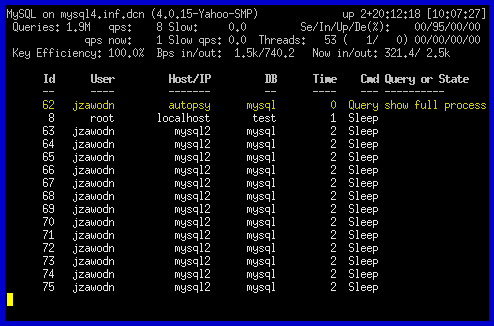
Mytop is a MySQL thread and performance monitoring tool that lets you examine the database and queries that are processing in real-time.
3. Htop – Linux Process Monitor
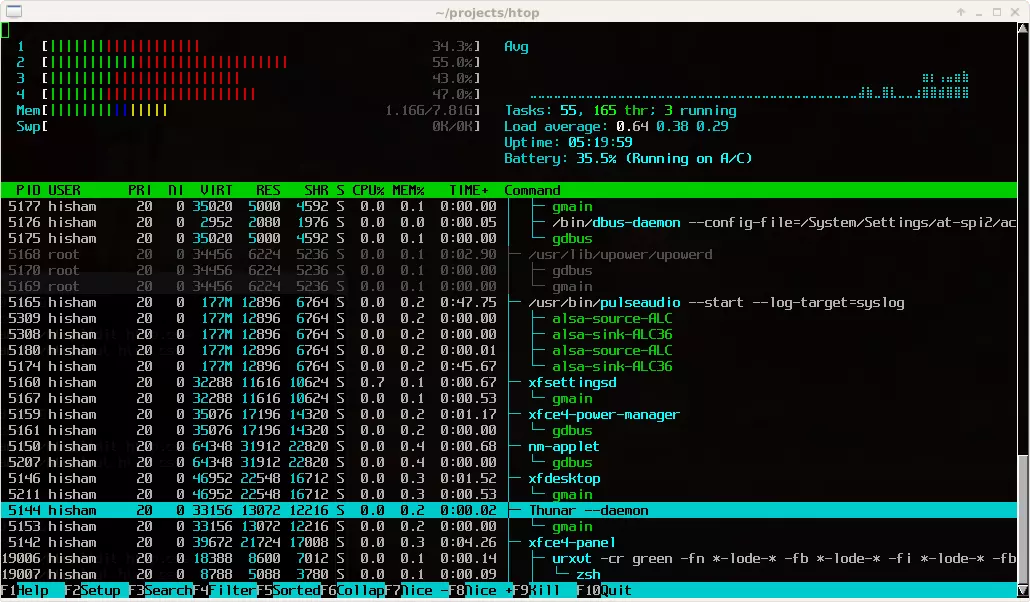
Htop is an advanced Linux process monitoring tool that is similar to “Top.” Still, it offers rich features like an interactive process viewer, vertical and horizontal process viewer, shortcut keys, etc. It’s a third-party Linux monitoring tool that isn’t pre-installed in Linux or Unix. You need to download and install it in the system.
4. Atop – Performance Monitor for Linux
Atop is a Linux performance monitoring tool that provides reporting of all system threads or processes, daily system logging, process activity for long-term data analysis, overloaded system resources, etc. It also shows the system activity on CPU, memory, swap, disks (including LVM), and network layers.
5. PowerTOP
If you want a simple tool that diagnoses issues with the Linux system’s power consumption and power management, then PowerTOP is the right tool. Moreover, it has an interactive mode where you can run the experiment with the various system-wide settings to get the best power management setting for the server.
6. Apachetop
Apachetop is a command line tool for monitoring the performance of the Apache web server. It’s based on the “mytop” tool.
7. iotop – Monitor Linux Disk I/O
Like the “Top” command and “Htop” program, iotop is a Python program to show you I/O usage data through a “Top” like interface. This tool lets you monitor and process real-time disk I/O. Moreover, you can also check the disk read and write time for the threads or process that is used the most.
8. ftptop – File Transfer Protocol Monitor
If you want to know the current FTP connection in your server with total secession, then ftptop is the right tool for you. It helps you to show the basic information about the total FTP connection, who the clients are, how many download and upload threads are currently active, etc.
9. iftop – Network Bandwidth Monitoring
iftop is another open source and free Linux system monitoring tool that shows important information on network bandwidth utilization on a selected network interface. It’s a handy tool that comes from the “Top” tool family, but instead of only checking CPU usages, it displays a table of current usages on a system network channel.
10. Monit – Linux Process and Services Monitoring
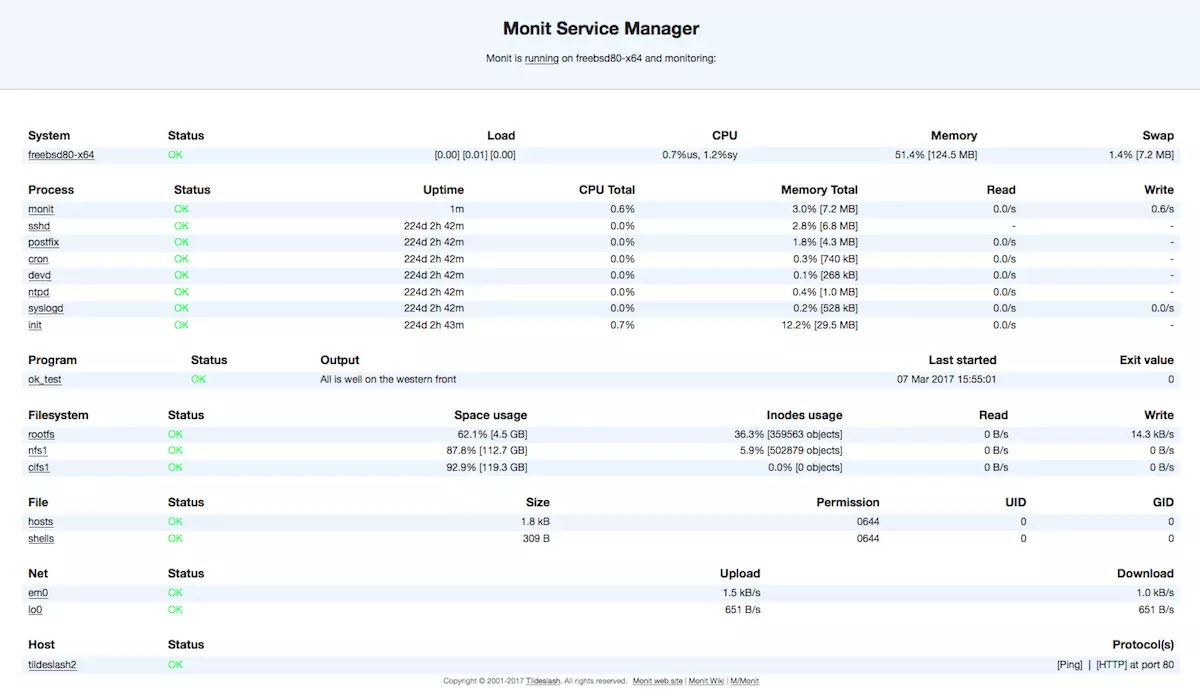
Monit is a free and open source web-based Linux process monitoring tool. It has an intuitive user interface through which it manages and monitors system threads, files, permissions, directories, programs, filesystems, and checksums.
Its monitoring services support MySQL, FTP, Mail, Apache, ProFTP, SSH, Nginx, and more. You can see the data either from a command line or via its default web interface.
Linux Network Monitoring Tools
Ensuring a healthy and smooth running system is one of the priority tasks of any Linux administrator. Here, I will discuss a generic list of the best Linux network monitoring tools:
11. jnettop – Linux Bandwidth Monitor
Jnettop is a helpful tool for monitoring Linux network traffic and bandwidth usage. It provides statistics comprising all the online traffic coming across the network. This Linux monitoring tool lets the router administrator see a list of communication on a network by host and port.
12. ntopng – A Network Traffic Monitor
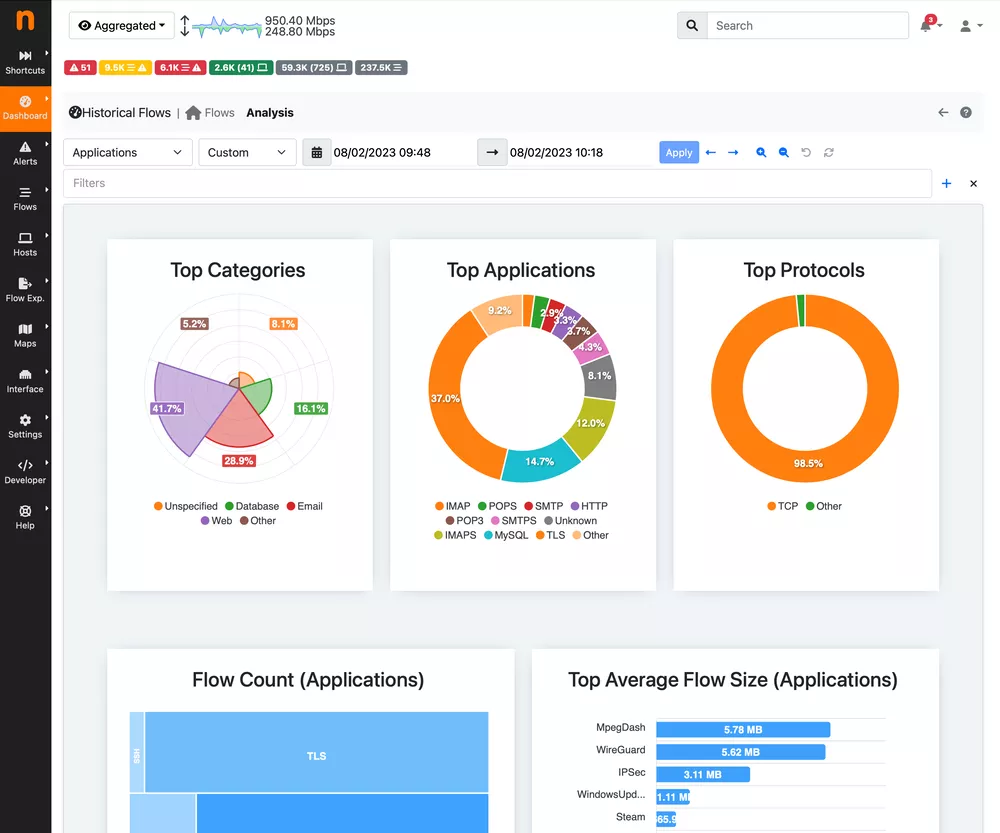
If you liked ntop, you are going to love ntopng, too. It’s a next-generation version of ntop. This tool provides a web-based graphical user interface to monitor network usage and traffic. It’s a cross-platform tool that runs on every Unix platform, MacOSX, and Windows.
13. EtherApe
EtherApe is a free and open source graphical network monitor for Unix systems. It can show you live network traffic or enable you to read it from tcpdump. It supports Ethernet, token ring, PPP, FDDI, WLAN devices, and several encapsulation formats.
14. BandwidthD
BandwidthD is one of the best network monitoring tools for Linux, Unix systems, and Windows. BandwidthD tracks usages of TCP or IP network subnets and provides a visualized graph image based on an HTML web page. It has a DB-driven system that supports filtering, searching, custom reports, multiple sensors, etc.
15. ethtool – Linux Network Drivers and Hardware Controller
ethtool is a fantastic Linux utility tool that controls wired Ethernet devices. It can be used to get identification and diagnostic information, extended device information, etc., and ethtool can control speed, duplex, auto-negotiation, and flow of Ethernet devices.
16. ngrep
ngrep is a PCAP-based tool like GNU grep but applicable for the network layer that lets you dictate hexadecimal or an extended expression to match against data payloads of network packets.
It supports various network protocols, including ICMPv4/6, IPv4/6, UDP, TCP, IGMP, RAW, etc. Moreover, it also understands BPF filter logic, such as that of various packet sniffing tools such as Snoop and tcpdump.
17. IPTraf – Real-Time IP LAN Monitoring
IPTraf is one of the best free and open source CLI-based Linux Monitor Network Traffic Tools available on the market. It collects and displays various useful information, including IP traffic passing over the network, packet and bytes count, TCP flag information, OSPF packet types, ICMP details, TCP/UDP traffic breakdowns, etc.
It supports various interfaces like local loopback, Ethernet and FDDI interfaces, SLIP, PPP, Parallel Line IP, and much more.
18. NetHogs – Linux Bandwidth Monitor
NetHogs is an open source network monitoring software similar to Linux Top command but a small “net top” tool that helps you to monitor Linux Network traffic and bandwidth, not breaking the traffic down per subnet or protocol but rather grouping it by the network bandwidth process.
This network monitoring software is helpful in finding out which PID is suddenly taking a lot of network traffic and bandwidth and has gone wild a bit.
19. MRTG – Router Traffic Monitor
If you are using a network router and want to know what it does, then the MRTG monitoring tool is for you. Though initially, the main aim was to monitor only router traffic, now it can do multiple network monitoring tasks as well.
It can monitor SNMP network devices and let you know how much traffic has passed using each thread. It provides the stats in an easily understandable picture and HTML pages. MRTG is a free, open-source software written in Perl programming language that works on Windows, Linux/BSD systems, and even Netware systems.
20. Traceroute
Traceroute is a built-in system tool for understanding the network route and estimating the delay of packets throughout the network interface.
21. bmon – Linux Bandwidth Monitor
Bmon is a network monitoring and debugging tool that gets various stats related to networking and prepares them in an easily understandable way. It supports various output methods, such as programmable text output for scripting and an interactive curses user interface.
22. netstat – Network Statistics
Netstat – Network Statistics is one of the best command line tools for monitoring network incoming and outgoing packets and interface statistics. This network monitoring software is very useful and handy for a system administrator to identify or troubleshoot network-related issues and monitor Linux network performance.
23. IPTState
IPTState – IP Tables State is a top-like tool that lets you have an interactive session to watch where traffic is crossing your IPtables firewall/Netfilter connection. You can sort this data and limit the view by various criteria.
24. darkstat – Linux Monitor Network Traffic
darkstat is a small, single-threaded, portable, and efficient open-source network monitoring software that captures network traffic, calculates usage stats, and displays reports over HTTP. It supports IPv6 and asynchronous reverse DNS resolution using a child process.
25. tcpdump – Network Packet Analyzer
Tcpdump is a network packet analyzer or packet sniffer software that runs on almost all the dominant Linux distributions. It’s one of the widely used and recommended command line Linux monitoring tools that is used to filter or capture TCP/IP packets that are transferred or received on a specific network connection. You can also export or save captured packages in a file for further advanced analysis.
26. ss
“ss” is a Linux command tool that is an alternative to the “netstat” network monitoring program. This command is faster and gives more system stats than netstat.
27. Justniffer – Network TCP Packet Sniffer
Justniffer is a network protocol analyzer and TCP packet sniffer tool that captures low-level and high-level network traffic data and produces a customized log from the Apache web server log.
28. MTR
mtr is a network diagnostic tool that combines the functionality of both ‘traceroute’ and ‘ping’ programs. When mtr gets its first run on a system, It checks the network connection of the host that mtr runs on and the user-specified host service.
29. Mpstat
Mpstat is one of the Linux network monitoring tools that collects and shows information on CPU utilization and performance statistics. Without using any option, it will display the Global Average Activities. The options ‘-p’ and ‘ALL’ display statistics one by one that start from 0. To get all the information in a single command, put ‘-u-I ALL -p ALL.’ in a word. This command system reports overall processor-related data.
30. Pmap
Pmap is a kind of open-source network monitoring software that helps find the complete address space of a process. It displays the memory usage map of single or multiple processes. To run the process, you need a unique process ID. As a result, you will be able to know the total address, bytes, mapping, and mode.
31. collectl – Linux Performance Monitoring Tool
Collectl is another open-source Linux performance monitoring tool that helps to know the current system status by collecting performance data. This command line tool can play the role of important utilities like ps, top, vmstat, and more. It is able to record and playback the captured data. To process its operation, collectl uses less than 0.1% CPU.
32. DTrace
DTrace is an open source network monitoring software that works as a user-level tool, operating system kernel, and device driver. Like C and awk, it provides a language ‘D’. This command line can reduce the overhead of gathering and processing data. With this tool, the performance of the production environment increases.
Linux Server Monitoring Tools
Setting up a server is not difficult nowadays, but maintaining a server for optimum performance is quite a tricky and challenging job for every sysadmin. As a server administrator, you have to keep track of each host and network every day and find out the performance and maintenance issues to keep the server up to date.
Keeping this scenario in mind, I am going to share a list of some of the best Linux server monitoring tools that will ultimately help you maintain and observe the highest infrastructure performance.
33. Linux Dash – Linux Server Performance Monitoring
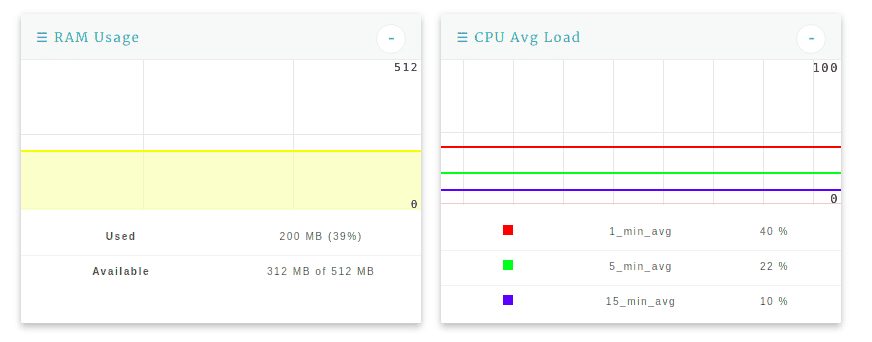
Linux Dash is a free and open-source server monitoring program that displays important data about your server system, such as running processes, CPU and memory usage, file systems, and bandwidth usage, in real time through a nice-looking web dashboard.
34. Nagios – Linux Server Monitoring Tool
Nagios is a powerful and one of the best leading Linux monitoring tools available out there. It’s an all-in-one Linux performance monitoring tool that is used as an open source network monitoring software, Linux server monitoring tool, and network analyzer.
It helps the system administrator identify server-related problems and lets you monitor remote Linux, Windows, routers, switches, printers, etc., on a single terminal. Nagios indicates and warns you about critical problems on your server or network, ultimately helping you take necessary remedies before any major problem occurs.
35. ps

Though ps is not a complete task manager, it is still a useful barebones command-line system monitoring tool that helps you to show various running programs. It’s a scriptable tool that runs and works well in collaboration with other commands in the terminal, which is effective and useful for any system admin.
The user does not need to install it in the system as it comes prepacked with every Linux distro. PS has some useful command arguments that help to sort the processes and IDs.
36. vmstat – Virtual Memory Statistics
vmstat is a Linux command tool that collects and analyzes data about your system’s memory, swap, kernel threads, disks, system processes, I/O blocks, CPU activity, and more in real-time. With the help of this Linux performance tool, you can find out the cause of the problem and issue related to system memory.
37. Wireshark
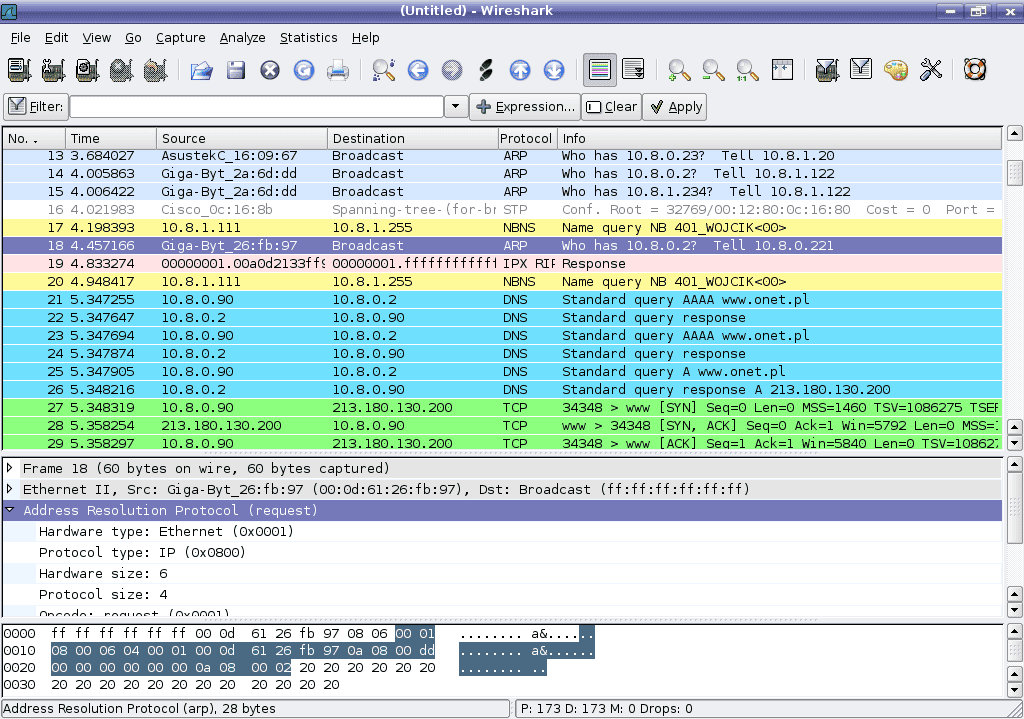
Wireshark is the most excellent tool for analyzing your network protocol. It supports various network protocols. It’s an open-source application that allows users to understand the network system and communication protocols. Moreover, users can troubleshoot network analyses and observe the data on a network.
38. Conky
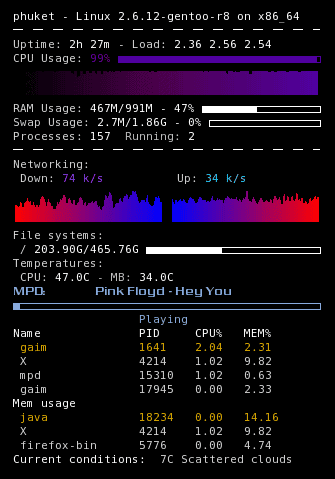
Conky is a free and cross-platform system monitor software for the X Window System. Users can install it on any Linux distro as it doesn’t depend on any specific Linux desktop environment. It shows various important system information like system temperature, disk usage, CPU and memory usage, network resource stream, download and upload, system notifications, and so on.
39. Glances – Real-time Linux System Monitor
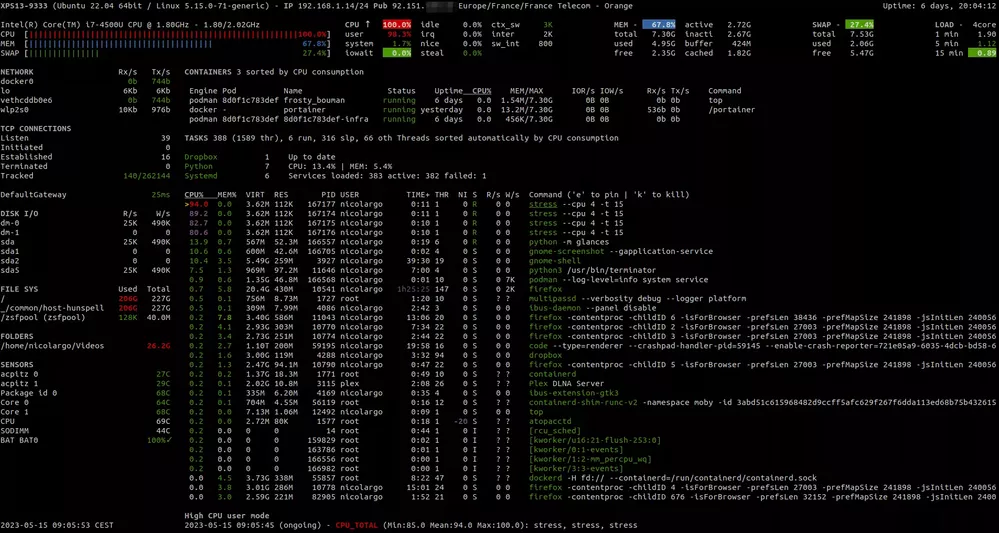
“Glances” is responsive, cross-platform, and one of the best Linux performance monitoring tools available on the market. It smoothly runs on Windows, BSD, MacOS, and all the major Linux distros. The user interface is responsive and provides as much information as possible through the web interface.
This Linux system monitor also works in client/server mode, where remote monitoring is possible through the terminal, web interface, or API (XML-RPC and RESTful). You can also export all those stats as external files or databases.
40. nmap
Nmap – “Network Mapper” is an open source and free Linux Server Monitoring Tool that is used for security auditing and network discovery. This tool is useful to network and Sysadmin for various network and server-related tasks like managing service upgrade schedules, network inventory, and monitoring server service and host uptime.
41. Monit – Linux Process and Services Monitoring
Monit is a free and open-source Unix/Linux server monitoring tool. You can use it through both the command line interface and a web interface. Monit is an effective server monitoring program that allows you to monitor the server system and services, including CPU and RAM usage, file permissions, file hashes, etc.
42. Icinga – Next Generation Server Monitoring
Icinga is a free and open source network monitoring software that can show information on your network devices, processes, and connections. It’s a complete Linux monitoring software gives real-time monitoring access to a simple and interactive web interface. It supports MySQL and PostgreSQL, and functionality can be increased using extensions and modules.
43. IoStat – Input/Output Statistics
IoStat is a simple command line tool that is used to get various system stats like CPU stats and input and output stats for devices. Moreover, a user can trace storage device performance issues, including file system partitions, network file systems, devices, and local disks.
44. Munin
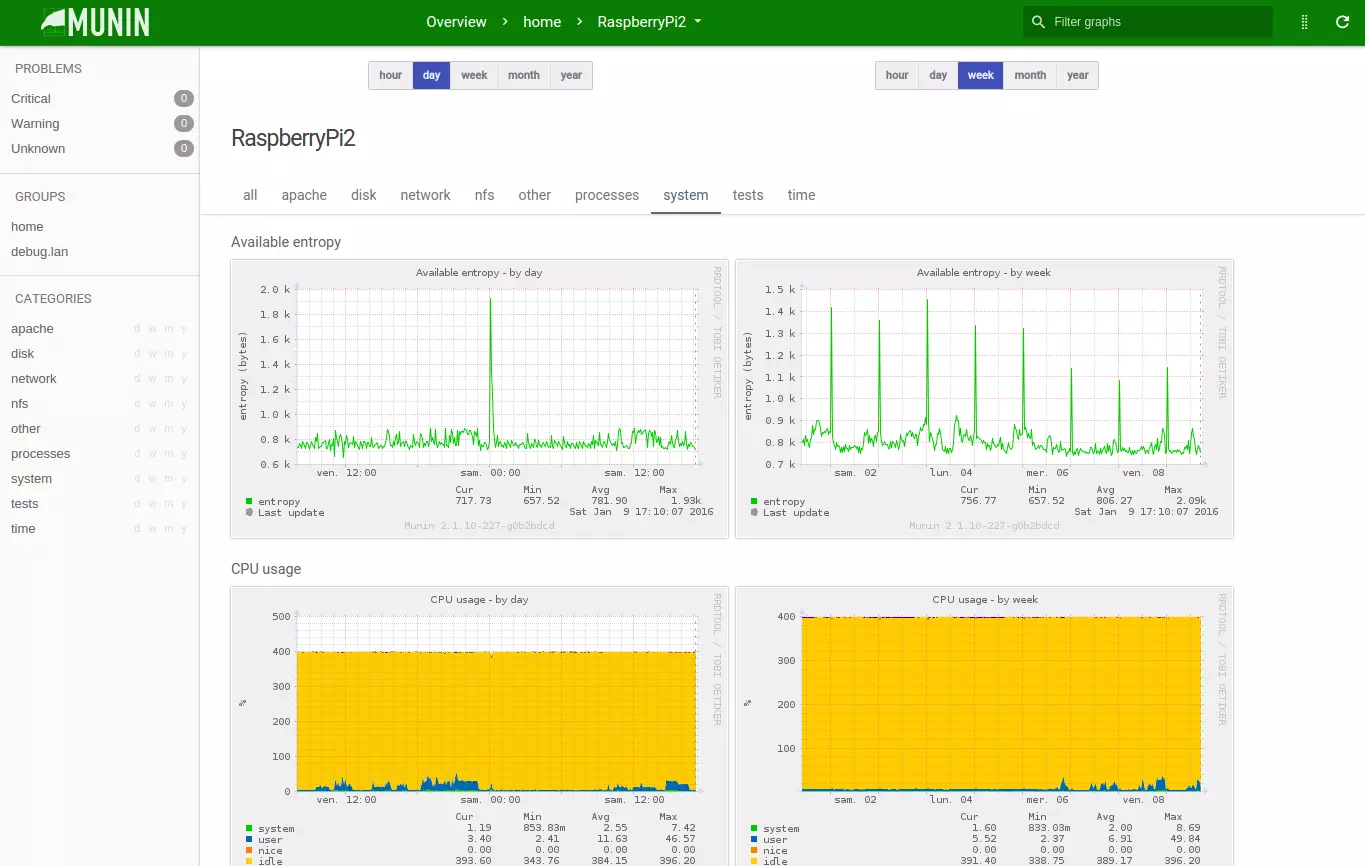
Munin can be used as both a network and system performance monitoring tool. This system resource monitoring tool analyzes the network threads and alerts the sysadmin when any metric kills the server performance. It creates a graph using RRDtool, and you can access those graph data via a web interface.
45. OpenNMS
OpenNMS is an open source network monitoring solution that offers four main functional areas, including event management and notifications, discovery and provisioning, service monitoring, and data collection.
46. SysUsage
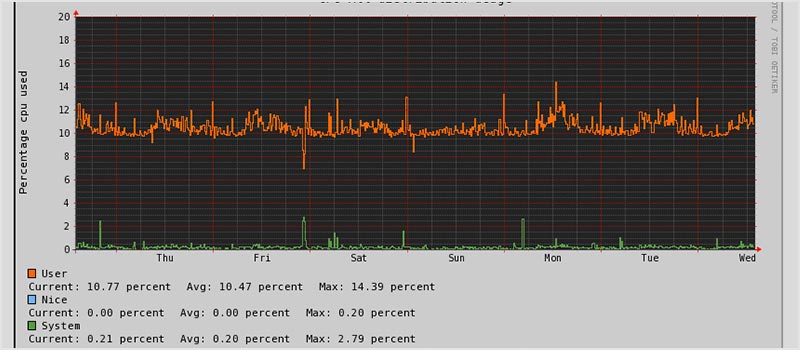
SysUsage monitors the server or system information and displays interactive graph reports using rrdtool or javascript jqplot library. This Linux server monitoring tool always grabs system activities using Sar and system commands, which seem useful for resource management and performance analysis.
47. Zenoss
Zenoss is one of the most popular Linux server monitoring tools. It offers an intuitive web interface where you can monitor all the important system and network metrics. Moreover, It alerts you about any changes in network configuration, and you can take action accordingly. It also supports Nagios plugins.
48. brainypdm
brainypdm is a web-based Linux system performance and data management monitoring tool. It creates a custom graph using various important performance data from Nagios or generic sources.
49. Cacti – Network and System Monitoring
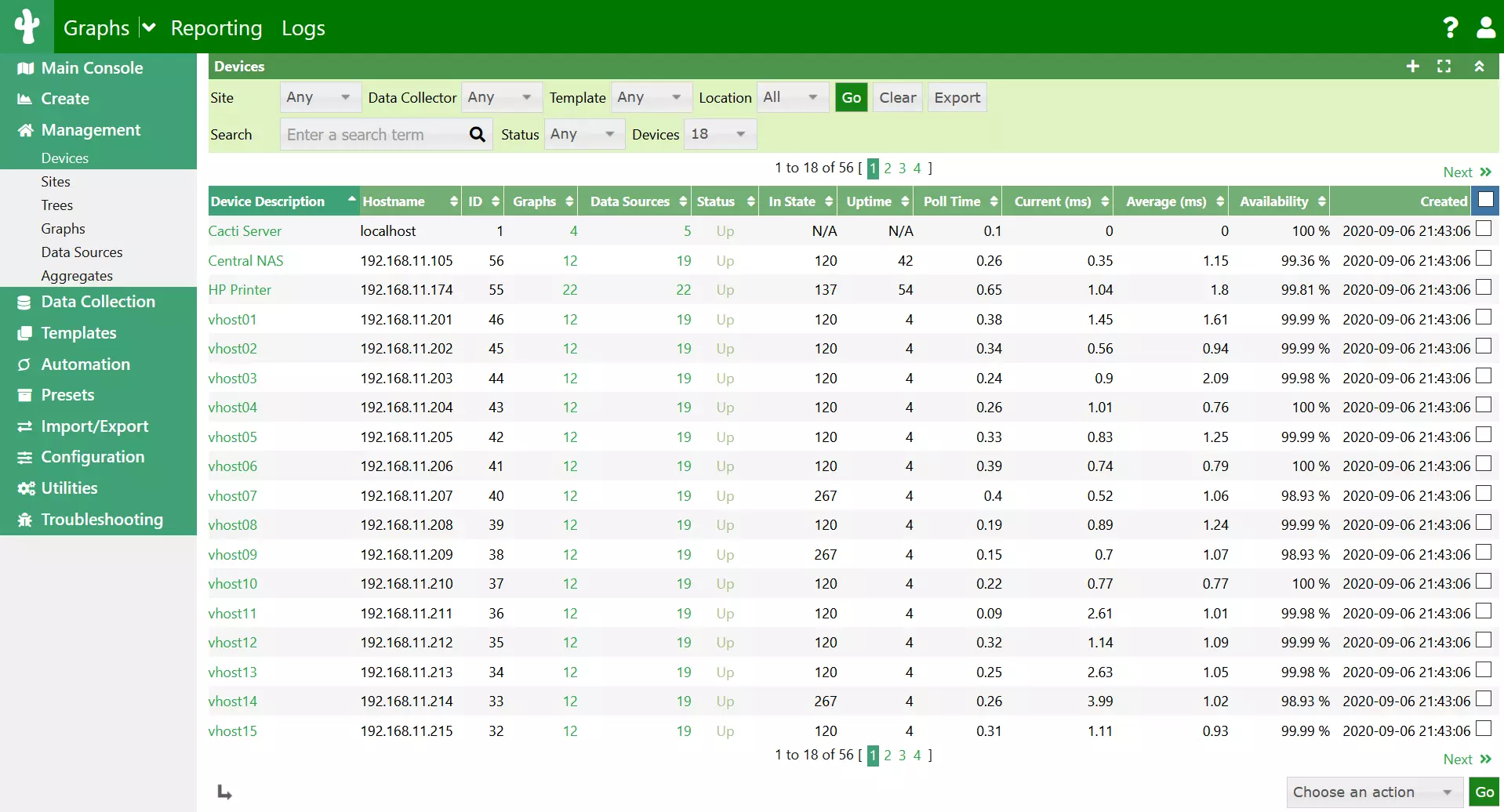
Cacti is a free, open-source, and cross-platform network graphing solution that uses the web interface for RRDtool data storage. It provides a lot of features, including advanced graph templating, a fast poller, user management, and multiple data acquisition methods.
50. PCP – Performance Co-Pilot
PCP is one of the best Linux server monitoring tools available in the market, and it can collect various important or specific data metrics from multiple host services. Moreover, It can make graph data reports based on specific metrics using a plugin framework, which, later on, you can access through a web interface or GUI.
51. Zabbix
Zabbix is a complete Linux monitoring tool that provides multiple services like network monitoring, server monitoring, cloud monitoring, service monitoring, and KPI / SLA monitoring. It’s an all-in-one open-source monitoring solution for any IT infrastructure.
52. Saidar – Displays Live System Statistics
saidar is a very small curses-based application that provides a bunch of basic system information, including CPU, processes, load, memory, swap, network I/O, and disks I/O.
53. Uptime
This simple command gives you a handful of information about how long the system has been running, the system load average, users currently logged in, etc.
54. Linux process explorer
Linux Process Explorer is a process monitoring tool similar to the activity monitor for OSX or the Windows system. If you like “top” and “ps,” then I suggest you use the Linux process explorer as it’s more usable and effective to get the system process and resource information.
55. nmon – Monitor Linux Performance
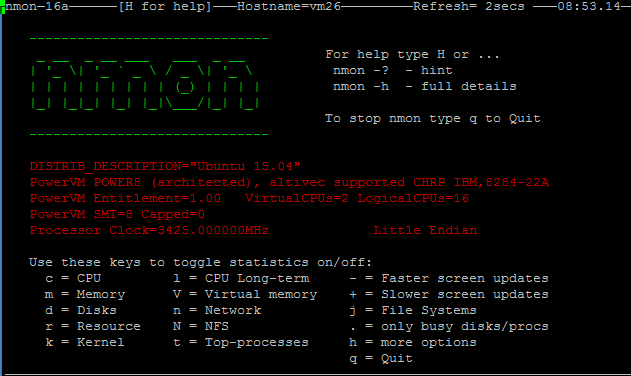
nmon, which stands for Nigel’s Performance Monitor tool. This tool is used to monitor all sorts of Linux resources like CPU and memory usage, disk usage, Top processes, NFS, network, kernel, and much more. You can get output data on screen or save it in a separate file, which you can export into an RRD database for further analysis.
56. RRDtool
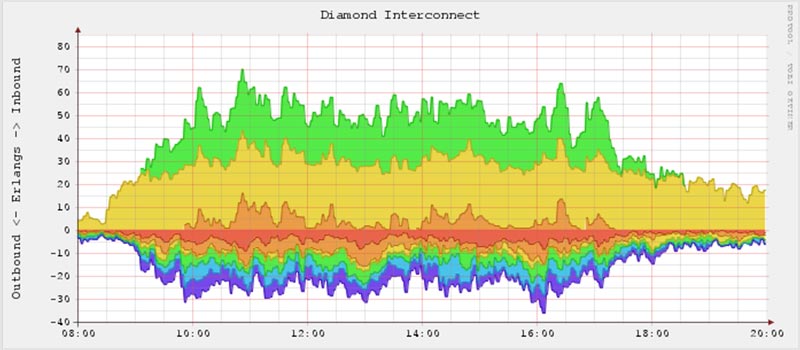
RRDtool is an open source data logging and graphing system for managing time-series data like CPU load, temperatures, etc. You can extract RRD data using this tool for an easily understandable graphical format.
57. Df – Disk Free
df is a pre-installed app in all Linux or Unix systems, which is used to know all the available disk space in the file system and the users it has access to.
58. Xosview
Xosview is a simple and easy-to-use system monitoring tool for Linux, BSD, IRIX, Solaris, and GNU. It offers various information about all the different parts, including IRQ.
59. Dstat
Dstat is the best alternative to iostat, netstat, vmstat, and ifstat. Dstat comes in handy for monitoring system resources and performance in real time. It combines all the important data from vmstat, iostat, ifstat, and netstat into one single file, which can also be exported as a CSV file.
60. Net-SNMP
Net-SNMP is a simple toolset for the collection of accurate information about the server system using SNMP-simple network management protocol.
61. Free
It’s a built-in command that gives information about the total amount of used and free disk space on the system, as well as the buffers used by the kernel at that given moment.
62. /Proc file system
The Proc file system displays kernel stats, which ultimately let you know about the different hardware devices on your system.
63. GKrellM
GKrellM is a GUI-based Linux monitoring program that displays the status of the system hardware, including hard disk, CPU, main memory, network threads, and so on.
64. Monitorix – System and Network Monitoring
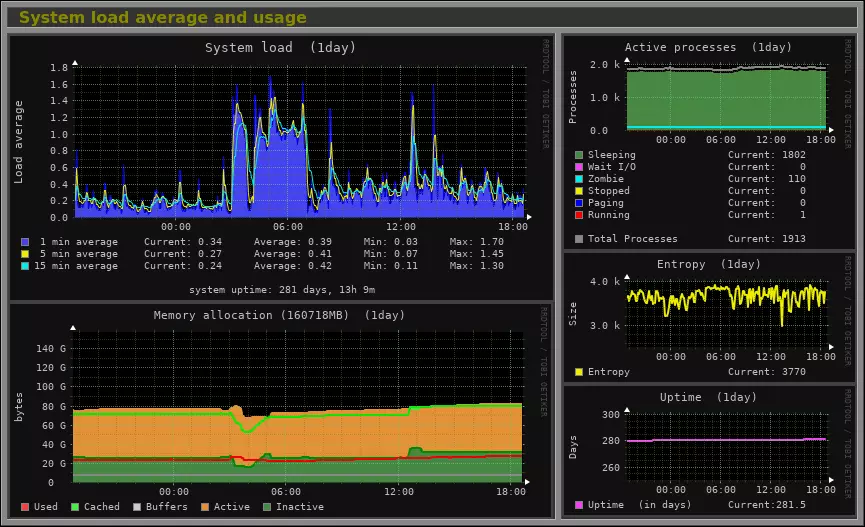
Monitorix is an open source, free, blazing-fast Linux system monitoring program. It works smoothly on Linux/Unix systems and embedded devices as well. This Linux monitoring tool is suitable for a small server and lets you have a wide range of data metrics through various effective graphs and reporting mechanisms.
65. Sar
Sysstat is a complete package of Linux Performance Monitoring Tools, and sar is a part of this. You can use different commands to collect, report, and save different system metrics, including memory, CPU, and I/O usage.
Log Monitoring Tools
Find out the actual cause of any software error; server or system logs play a vital role. Though a text mode log is quite difficult to deal with when finding the cause and solution, there are many log management monitoring tools to help you out of difficult situations. This list of Linux log monitoring tools or programs will help you a lot with effective log management.
66. Sarg – Squid Analysis Report Generator
Sarg is an HTTP proxy log analyzer tool that lets you know what and where the users are roaming on the Internet. It’s a free and open source Linux monitoring tool that provides stats and information about Squid proxy server users, IP addresses, sites and times, byte usages, etc. It’s effortless to install, use, and generate outputs in HTML format.
67. vnStat – Network Traffic Monitor
vnStat is a free, open source, simple-to-install and use terminal-based BSD/Linux network traffic monitor that keeps a stats log of network traffic for the chosen interfaces. All those stats and information will be collected from the system kernel, which ensures the light use of system resources and doesn’t sniff any traffic data.
68. MultiTail
Managing and understanding the server log file is always difficult and time-consuming. To overcome this difficulty, MultiTail helps you to see the system log files in a single window. Moreover, you can also merge multiple log files into one single unified file for easy analysis. You can also use various colors to make it easily understandable with the help of regular expressions.
69. GoAccess
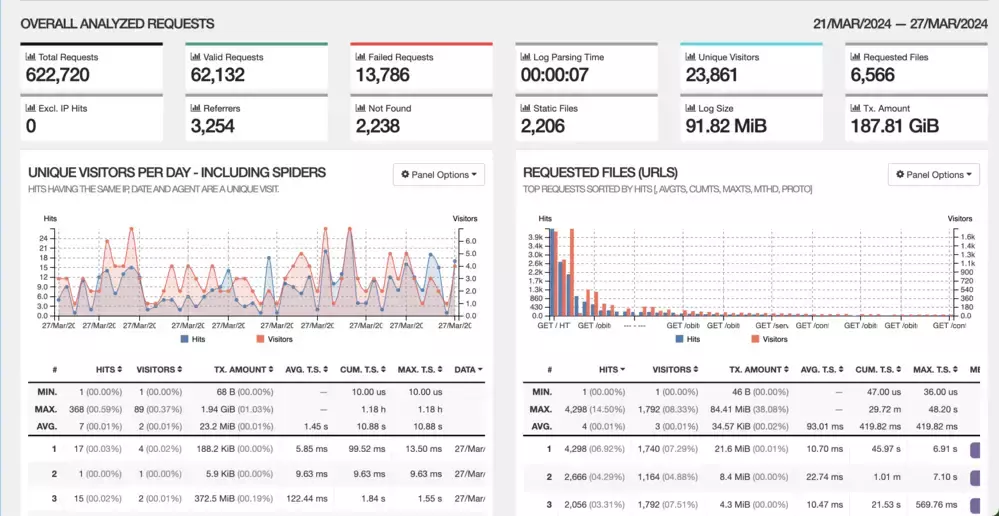
GoAccess is an ultra-fast, open source, and Terminal based real-time web access log analyzer. It can analyze web access logs from Apache, Nginx, Amazon S3, Elastic Load Balancing, CloudFront, etc. The sysadmin can output the data in JSON, HTML, or CSV format. It can give you valuable HTTP stats, 404s, geolocation, top visitors, and much more
71. Logwatch
Logwatch is one of the best customizable Linux monitoring tools, which analyzes the system log and creates a custom report based on user-specific areas. This log analyzer can also provide you with a daily report of the activities taking place in the server system. It’s easy to use and works on all the major Linux distros.
70. Simple Log Watcher
Like Logwatch, Simple Log Watcher is also designed to monitor systems logs. In spite of creating reports, it watches logs for regular expression and notifies the sysadmin through the mail or the terminal.
Linux Network Managers
Now, I will discuss the four most recommended Linux network managers, which provide a complete network package for every Linux user.
71. ifconfig
ifconfig is one of the best and most fundamental Network Management Tools for Linux systems. Users can use it as a standalone network management software through CLI or Linux Terminal Emulator. Moreover, many network tools are used as part of this Linux, such as network manager.
Despite being a command-line tool, it becomes more efficient and easy to use when you understand what you are doing. It offers a list of various useful functions, lets you customize, and ensures overall security and privacy.
72. GNOME Network Manager
Gnome Linux network manager is a prepacked default network management tool that comes with Ubuntu and the Gnome desktop environment. It is a simplified network connections manager that is well integrated within the Gnome system, which comes very handy when basic network system handling is the focus.
73. Network Tools
“Network Tools” is a much more advanced Linux network manager found in the Ubuntu system. This “network tool” is a counterpart of the Gnome network manager, where users can perform advanced-level network detection tasks and sort out problems. This network management software lets you know about various network activities and problems as well.
74. Wicd
Wicd is the best Linux network manager available in the market now. It’s now a default network manager on a wide range of Linux distros. It provides all the advanced settings a user needs to configure, such as IP settings, network ID, individual network connection, low-level systems connect and interact, etc. Wicd also ensures privacy when you use it in conjunction with Tor.
Linux Performance Monitoring Tools
Are you responsible for maintaining Linux infrastructure? Here, I have discussed some of the best Linux performance monitoring tools, which will help you monitor, understand, and manage the health and performance of each Linux system element, including CPU, memory, storage, and network.
75. Gnome System Monitor
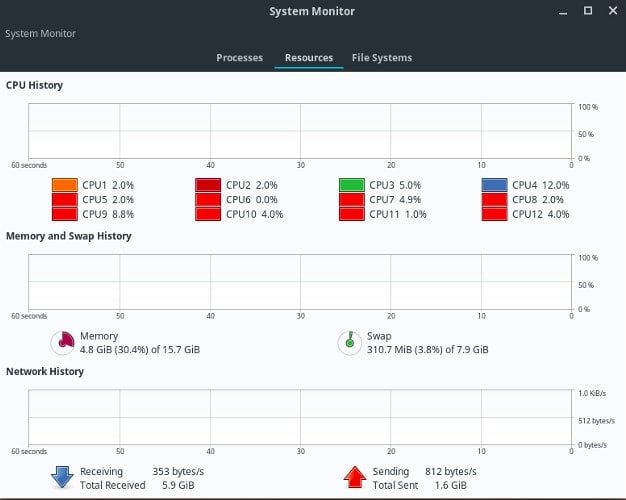
Gnome system monitor is a lightweight, minimalistic, but powerful Linux task manager for the Gnome shell desktop environment. This Linux system monitoring tool shows you important information about hard drive space, RAM/SWAP usage, running processes and time, network activity, etc., in an easily understandable display.
76. Sysstat – All-in-One System Performance Monitoring

Sysstat is another one of the best Linux monitoring tools. It is a combo package comprising many Linux performance monitoring tools like pidstat, sadf, iostat, etc. This all-in-one performance solution displays various useful stats about your Linux system.
It’s available on all the major Linux distros. Sysstat shows data about CPU, RAM, and SWAP usage; monitors system kernel activity, sockets, TTY, NFS server, and file systems.
77. VnStat PHP – Monitoring Network Bandwidth
As vnStat is a console-based network traffic logger, it will be tricky for beginners to use or analyze the data. In this case, vnStat PHP helps you to understand the vnStat data through a nice-looking web-based frontend. You can use this GUI to check network traffic usage based on hourly, daily, monthly, and full summary reports.
78. Nload – Linux Bandwidth Monitor
Nload is a command line Linux monitoring tool that observes network traffic and bandwidth in real-time. This network traffic monitoring tool lets you visualize the in- and outgoing traffic through two interactive graphs. It also provides some additional but important information about total data transferred using any specific network channel and min/max network usage.
79. Observium – Network Management and Monitoring
Observium is yet another useful network management software designed to manage your server network easily. There are both free and paid versions with the support of MySQL DB.
It’s cross-platform network monitoring software that works on Windows, Linux, FreeBSD, and more. It can handle and monitor hundreds of host services around the world and output various information via an intuitive web interface.
80. SmokePing
SmokePing is a free and open source network monitoring software. It helps you to keep track of your network latency. It offers a wide range of latency measurement plugins that ultimately let you do various tasks like the configuration of an alert system, a slave system for distributed measurement, latency visualization, etc., through interactive GUI and graphs.
81. KSysGuard
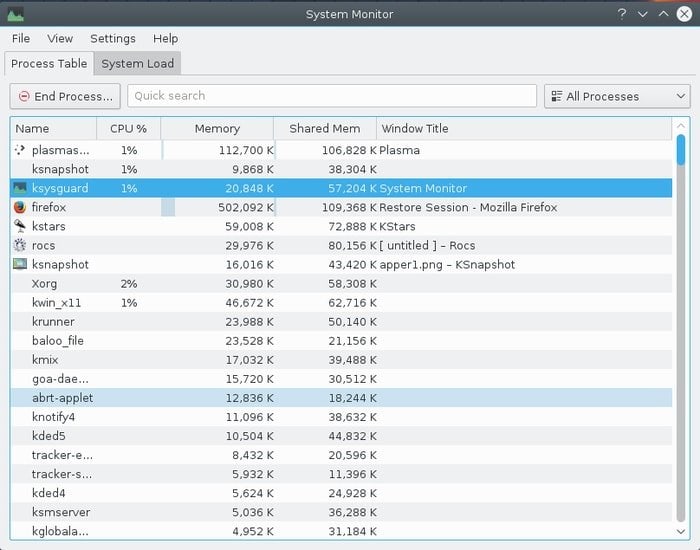
KSysGuard is the default Linux task and system performance monitor for the KDE desktop environment. One of the notable features of this Linux task manager is it supports client/server architecture that lets you monitor both remotely and locally.
It’s a no-nonsense task manager that allows you to kill/end the problematic program easily. KSysGuard can be used in both the graphical interface and Terminal mode.
82. Shinken Monitoring
Shinken is a server monitoring framework that is a total rewrite of Python Nagios® Core for increasing flexibility and scalability and managing a large environment. It’s a featured-packed and ready-to-run monitoring pack that keeps your Nagios® configuration and plugins intact.
83. Lsof – List Open Files
Lsof is a great tool used in a Linux or Unix system to know about all the open files and system processes. It’s a built-in Linux system monitoring tool that you can use to see all the open files by processes and network connections. You can sort out the active process by names or users, and it lets you kill all threads that are used by a specific user.
This command tool will be helpful when it shows an error that the files are used or the disk can’t be unmounted. In this situation, Lsof will let you know which users are using files or system threads are in use.
84. Webmin
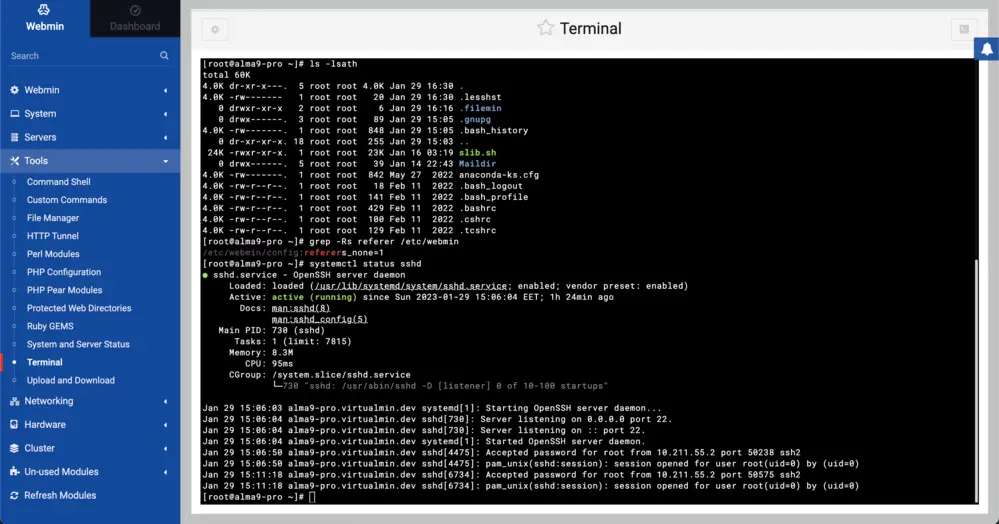
Webmin is a web-based system configuration tool for a Unix-like server. Though it was developed for the Linux system, you can still install it on the Windows platform. It provides a simple, easy-to-use, modern user interface for your server.
With the help of Webmin, you can configure the system’s internal components like users, disk quotas, and service files. Moreover, you can also control and modify the server’s open source applications such as PHP, MySQL, and Apache HTTP server.
85. Arpwatch – Ethernet Activity Monitor
Arpwatch is a Linux performance monitoring tool that helps monitor Address Resolution Protocol traffic on a computer network. With the help of Arpwatch, you can keep a database of all identified IP and MAC address pairings. It is a great computer security program written in the C programming language. To get installed, you have to use the apt-get command.
86. acct or psacct – Monitor User Activity
Acct and psacct are open source applications that monitor users’ activities in a system. Besides tracking the activity, it also checks what resources are being consumed. Acct or psacct allows observing how long the users are connected to the system. In total, these tools help in various administrative tasks.
87. Whowatch
Whowatch is a popular and important console application that lets you know about the different users and their activities. As it works in real-time, you can get the up to date information from this program. It allows the data like login name, tty, user’s process, and more. Whowatch doesn’t need any command line options.
88. Suricata – Network Security Monitoring
Suricata is a free network security monitoring program that enables intrusion detection in real-time, inline intrusion prevention, and offline pcap processing. With the help of its powerful signature language, it can inspect the network traffic. It takes care of the security, usability, and efficiency of the system.
89. Stat Command
The stat is a useful command in Linux that is used to view files and the status of file systems. It has its own custom format besides the default to display information. It enables the following of symbolic links and print information in a terse form.
90. Collectd
Collectd is a kind of command program for Linux that receives statistics of the system and makes them available in several ways. It mainly collects, transfers, and stores performance data from various network equipment. It is a daemon that comes with a huge collection of plug-ins in its default configuration file.
91. Strace
Strace is a useful Linux command line tool that can be used for diagnostic, instructional, and debugging operations. It’s a powerful application that captures and records the system calls made by a process and the signals received by the process. You can get a summary of the Linux process and trace specific system calls.
92. Ulimit
Whether you want to change the number of open files in the Linux system, Ulimit is a great command line tool for this. You need to have the root access to your system. You can check and configure both the user level and global limits for the maximum quantity of opened files.
93. CPUlimit
Cpulimit is another useful utility of the Linux system for solving particular problems. It enables the system to load dynamically and fast. When any particular process consumes more CPU usage and affects the overall performance, Cpulimit helps to get rid of this.
It controls the batch jobs when you don’t require to consume more CPU usage. The amount of the usage will be distributed and controlled by sending SIGSTOP and SIGCONT POSIX signals.
94. Lshw
Lshw is an open-source Linux command that provides a detailed report about the hardware system. You will get complete information on a single screen with the help of this program. Lshw can provide you with the report of firmware version, CPU version and speed, graphics card, bus speed, memory configuration, and more. It also has some special features available to detect partial or full information.
95. W
W is one of the basic Linux command tools that show information about the users who are currently logged into a system. For an individual user, you will get the report on a login name, tty name, login time, JCPU, remote host, and more.
The Last Word
In the end, I hope this list of the best Linux monitoring tools helps you monitor various Linux elements like the server, network, desktop, infrastructure, etc. Let me know what you think about these Linux monitoring tools in the comment below. Will it be helpful for performing or ensuring Linux performance? Moreover, Let us know if I missed any important monitoring tool here.
If you like this article, please share it on your social media. Also, don’t forget to leave a comment about your experience and valuable suggestions.
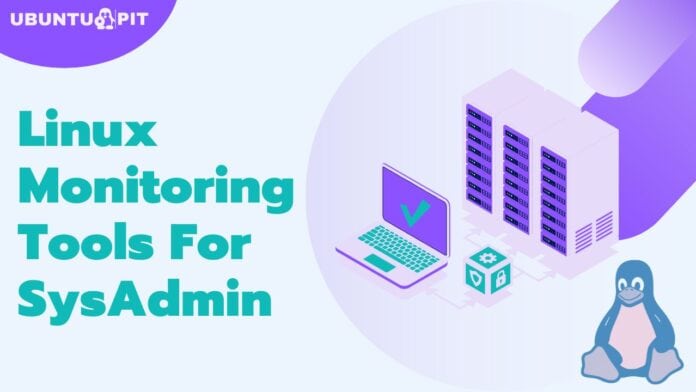
You forgot https://github.com/alexmyczko/ruptime
Hi Mehedi,
Though I am just starting my career in Linux. I find your article very good and helpful. Thank you very much for this.
I would definite like to have a mentor like you man.
It’s good, thanks.
Thanks for sharing. Good reference for a neophyte like me 🙂
Also add text console based “hegemon” from https://github.com/p-e-w/hegemon
You can add Netdata, a free, open source, light-weight, browser-based, real-time, performance and health monitoring for systems and applications. It’s amazing how many metrics it makes available.
I wrote a mini script, to get and show the System Information in a minimalistic way in one line. Please check this in:
https://nelbren.com/en/terminal/2018/05/23/SIB_system-information-bar/
Nice article.
You know ‘ss’ is the next generation of netstat and will (in my understanding) replace netstat.
‘ip’ will replace ifconfig and arp to name a few.
You also missed LibreNMS a fork of Observium, but with a more vibrant community.
Nice but many linux instances are running as containers in clouds. Visibility of hardware and resources can vary or/and create wrong results. Most of these tools are written when 1 linux instance running on hardware with no virtalization. Tools needs to be updated and here information regarding this issiue should be addressed like works in container or not……